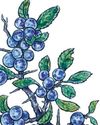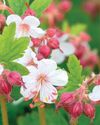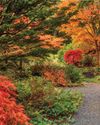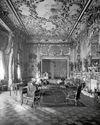
IN the same way as the astronomer watches for the North Star, the ‘bothyer’ watches for a chimney. The grey stone stack stretching up over the rise of the glen is the guiding sight that the long walking day is coming to an end. There, through snow-flicked conifers, across valleys of ice and far-away mountains, beyond the charcoal line of a freezing stream, lies Scotland’s most perfect secret: the lone bothy.
Indeed, Britain’s northernmost country is the homeplace of the bothy. These small wooden huts or stone cottages, once farm buildings used for labourers, are now remote refuges for any hardy traveller, to be entered free of charge. Of the 100 bothies across the UK, 83 can be found within the Scottish borders, all cared for by the Mountain Bothies Association (MBA). This charity, which has won The Queen’s Award for Voluntary Service (the highest award given to volunteer groups across the UK), was established in 1965 and credits the post-First World War and 1930s mountaineering and hill-walking trend for creating the modern bothying pastime.
Now, 50 years on, the MBA continues to maintain the bothy network for the benefit of all those people who love these beguiling places. Bothies are challenging to reach at best and dangerous to reach at worst. They are also expensive to repair and restore, as well as to keep in good order. The Scottish weather has no mercy and the physical toll on the buildings means the MBA is constantly having to drain its pockets to fix windows and doors, rebuild chimneys and mend failing roofs. It is a feat of communal effort overseen by an ageing group of people, many of whom have been part of the organisation for 30-odd years. The MBA survives on membership fees, donations and by the labour of volunteer work parties. Only with much-needed young volunteer help can the existing team of caretakers continue to keep this unique tradition alive.
この記事は Country Life UK の January 13, 2021 版に掲載されています。
7 日間の Magzter GOLD 無料トライアルを開始して、何千もの厳選されたプレミアム ストーリー、9,000 以上の雑誌や新聞にアクセスしてください。
すでに購読者です ? サインイン
この記事は Country Life UK の January 13, 2021 版に掲載されています。
7 日間の Magzter GOLD 無料トライアルを開始して、何千もの厳選されたプレミアム ストーリー、9,000 以上の雑誌や新聞にアクセスしてください。
すでに購読者です? サインイン

Kitchen garden cook - Apples
'Sweet and crisp, apples are the epitome of autumn flavour'

The original Mr Rochester
Three classic houses in North Yorkshire have come to the market; the owner of one inspired Charlotte Brontë to write Jane Eyre

Get it write
Desks, once akin to instruments of torture for scribes, have become cherished repositories of memories and secrets. Matthew Dennison charts their evolution

'Sloes hath ben my food'
A possible paint for the Picts and a definite culprit in tea fraud, the cheek-suckingly sour sloe's spiritual home is indisputably in gin, says John Wright

Souvenirs of greatness
FOR many years, some large boxes have been stored and forgotten in the dark recesses of the garage. Unpacked last week, the contents turned out to be pots: some, perhaps, nearing a century old—dense terracotta, of interesting provenance.

Plants for plants' sake
The garden at Hergest Croft, Herefordshire The home of Edward Banks The Banks family is synonymous with an extraordinary collection of trees and shrubs, many of which are presents from distinguished friends, garnered over two centuries. Be prepared to be amazed, says Charles Quest-Ritson

Capturing the castle
Seventy years after Christian Dior’s last fashion show in Scotland, the brand returned under creative director Maria Grazia Chiuri for a celebratory event honouring local craftsmanship, the beauty of the land and the Auld Alliance, explains Kim Parker

Nature's own cathedral
Our tallest native tree 'most lovely of all', the stately beech creates a shaded environment that few plants can survive. John Lewis-Stempel ventures into the enchanted woods

All that money could buy
A new book explores the lost riches of London's grand houses. Its author, Steven Brindle, looks at the residences of plutocrats built by the nouveaux riches of the late-Victorian and Edwardian ages

In with the old
Diamonds are meant to sparkle in candlelight, but many now gather dust in jewellery boxes. To wear them today, we may need to reimagine them, as Hetty Lintell discovers with her grandmother's jewellery